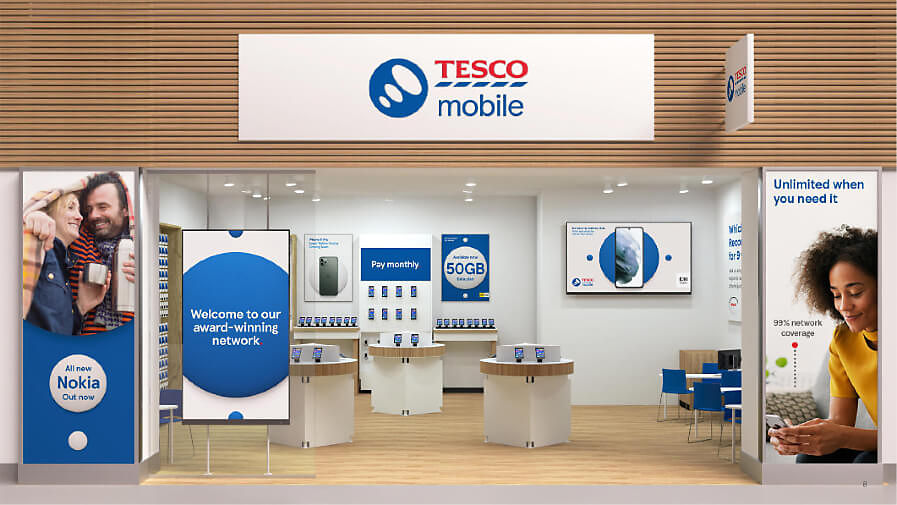CES 2016: All the Biggest Announcements
- Friday, January 8th, 2016
- Share this article:
CES is nearly over for another year. The show can be light on mobile news, as the industry gears up to MWC in February, but when it comes to adjacent technologies – like wearables, VR and the entire Internet of Things – it consistently sets the pace for the rest of the year.
Weve gathered together the most interesting announcements from CES 2016, from smartphones to connected pregnancy tests, for your reading pleasure.

Smartphones & tablets
Probably the most interesting handset announcement was Lenovos forthcoming collaboration with Google, a smartphone specifically designed for Googles Project Tango computer vision and motion tracking software for capturing 3D spaces, previously only available on a tablet development kit.
There was also a theme of Chinese manufacturers bringing their handsets to the West. LeTV announced the Le Max Pro, its first attempt to break into the US market, and the worlds first smartphone to feature Qualcomms Snapdragon 820 chip, while Huawei announced a European launch for the Mate 8, a 6” smartphone running the manufacturers own heavily-skinned version of Android 6.0 (Marshmallow) which has already sold 1m units in China since its launch last month.
Finally, Acer unveiled its first Windows 10 Phone handset, the Liquid Jade Primo, launching in February, and the Iconia One 8, an entry-level 8” Android tablet.

Connected cars
BlackBerry didnt make any mobile announcements at the show, but did reveal additions to its QNX OS, most commonly used for in-car entertainment systems, that will enable it to be used for safety systems in self-driving vehicles.
Ford announced it is adding support for Googles Android Auto and Apples CarPlay to its Sync 3 connected car technology, integrated into every Sync-equipped car from 2017 onwards.
Volkswagen also showed off its own infotainment system at the show, due to be first seen in its e-Golf hatchback. The e-Golf Touch system is compatible with Apple CarPlay, Android Auto and MirrorLink, and can be controlled using 9.2” touchscreen or voice controls that VR promises will be a significant improvement over previous generations.

Wearables
Misfit unveiled its Misfit Ray fitness and sleep tracker, a small aluminum cylinder designed to sit alongside regular jewellery, and Specter smart wireless headphones, which also function as an activity tracker. Both can be paired with Misfit Link to control a whole range of connected devices, from smartphones to smart homes.
Fitbit announced the Fitbit Blaze, a basic smartwatch that retains the companys focus on fitness with a digital personal trainer, heartrate measurement and GPS tracking.
Garmin unveiled the Varia Vision, a device that cyclists can clip to their sunglasses to turn them into a heads-up display. Connecting to the Garmin Edge bike computer, the Vision shows turn-by-tuurn navigation, cycling metrics and smartphone notifications in the wearers eyeline.
HTC announced a partnership with Under Armour, which will see the two companies launching the UA HealthBox, a $400 fitness system comprised of an activity tracker band, heartrate-monitoring chest strap, and connected weighing scale.
MasterCard has partnered with Coin to bring credit card payments not only to smartwatches but also selected fitness trackers, with the first wave of compatibility including Atlas Wearables, Moov and Omate.

Virtual Reality
Oculus opened up preorders for its finalised Rift headset, expected to start shipping in June, and also revealed that backers of its original Kickstarter campaign, who provided enough funding to secure a development kit at the time, will also receive a free Rift at launch.
HTC announced the launch of a second-generation developer kit for its Vive headset, a collaboration with PC gaming giant Valve, ahead of the final consumer launch in April.
Twentieth Century Fox unveiled The Martian VR Experience, an interactive spinoff from Ridley Scotts 2015 film that gives users a chance to explore the surface of Mars, launching on Oculus Rift, HTC Vive and PlayStation VR later this year.

Connected home
Samsung showed off a line of SUHD TVs with a SmartThings controller hub integrated, enabling the user to control smart home device from their TV, and the Family Hub fridge, which has a 21.5” display mounted on its front.
LG unveiled its Smart ThinQ Hub, another centralised device for controlling smart home devices, similar to the Amazon Echo.
The show also saw a host of connected baby accessories aimed at new parents, including Withings Thermo, a wi-fi-enabled thermometer which can read a babys temperature without needing to wake them up, and Owlets smart baby monitor, featuring a pulse oximeter which relays the babys heartrate and oxygen blood levels to a smartphone app via Bluetooth.

The best (and weirdest) of the rest
And for couples who arent parents just yet, First Response revealed its Bluetooth-enabled Pregnancy Pro test. Costing $15-20, it essentially replaces the traditional plus or minus symbol on the stick with a notification, but a paired smartphone app also features content for the user during the three-minute wait for the test to complete, customised based on whether they are hoping to get pregant or trying to avoid it.
Spheros popular BB-8 toy, a remote-controlled version of the latest Star Wars films spherical droid, gained an unusual accessory in the Force Band, a wristband with sensors that read the wearers hand movements to control the toy.
Finally, one of the undisputed stars of the show has been LGs flexible OLED displays, which can be rolled up like a piece of paper. Bad news for anyone hoping to roll Netflix up under their arm like a newspaper, though – the screens are currently firmly in the prototype stages, and LG hasnt confirmed whether theyll ever see the light of day on the consumer market.
















